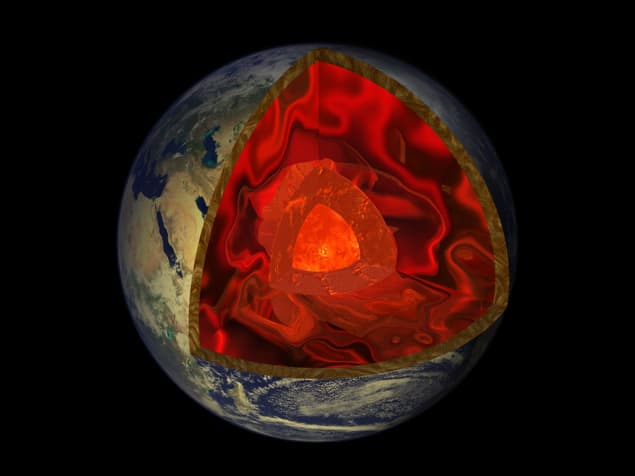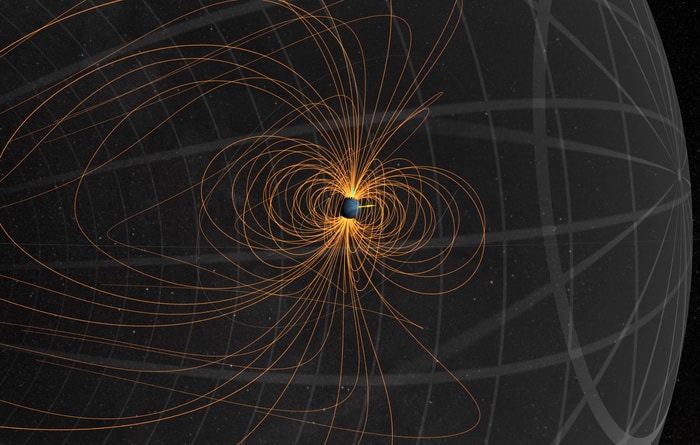
The extreme pressures and temperatures found in the cores of Earth-like planets have been recreated using an ultrahigh-power laser at the Lawrence Livermore National Laboratory (LLNL). The research was led by Richard Kraus and suggests that rocky planets larger than Earth should have strong magnetic fields that are sustained over billions of years. The study could provide key guidance in the continuing search for life on the growing number of Earth-like exoplanets that have been observed orbiting stars other than the Sun.
When a rocky planet forms, material below the surface crust separates into a lighter silicate mantle that floats on a dense iron core. The molten core gradually loses heat to the surrounding mantle and in the case of the Earth, the inner core solidifies – releasing even more heat.
This movement of heat occurs via convection in Earth’s molten outer core – activating a dynamo process that generates a strong magnetic field. This field shields life on Earth from deadly radiation, and astrobiologists believe that such fields could be a prerequisite for organic life to emerge on other planets. However, questions remain surrounding the conditions that allow this convection to occur and remain stable over billions of years.
Melting curve
In the high-pressure, high-temperature environments of planetary interiors, molten iron convection is adiabatic. This means that is has a well-defined temperature profile as it flows up and down. At the same time, iron’s melting point is known to depend on its pressure, in a relation described by the iron “melting curve”.
Within a planet’s core temperature and pressure change as a function of depth and iron will solidify where the temperature and pressure intersect the melting curve. Within the Earth, this intersection occurs close to the centre – resulting in a solid inner core and processes that can drive a magnetic dynamo for billions of years.
If the intersection occurs further from the centre, crystallization will occur in a “top-down” process – a bit like ice forming on a lake. Here, solid “snowflakes” of iron form close to the edge of the core, leaving a molten centre. In this snowflake scenario, a magnetic dynamo is not expected to be sustained for long times.
Heat and high pressure
In their study, Kraus’ team recreated these varying conditions by heating iron with an ultrahigh-power laser housed at the LLNL’s National Ignition Facility. This generated pressures exceeding 1000 GPa, which is three times that experienced by Earth’s inner core. Using X-ray diffraction, the researchers could then analyse the melting curve of iron.

Superionic ice phases could explain unusual magnetic fields around Uranus and Neptune
The team discovered that the strongest magnetic fields emerge in planets with roughly 1.5 times the radii, and around five times the mass of Earth. Such conditions generate a strong temperature gradient between the molten outer core and the mantle. This in turn drives strong convection patterns in the molten iron, generating and sustaining magnetic fields for billions of years.
Conversely, iron snowflakes are expected in planets the size of Mars – which contain an abundance of lighter elements in their cores, making it far more difficult to sustain magnetic fields. With about 1500 Earth-like exoplanets now identified to date, these results enable astronomers to better determine which of these can sustainable magnetic fields, on timescales which may allow life to emerge.
The research is described in Science.
